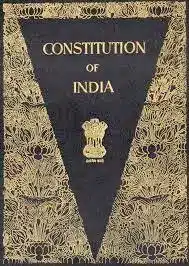List of Top 25 MCQs On Virus are given below :
1. The protein coat of viruses that enclose the genetic material is called
(a) Virion
(b) Capsid
(c) Peplomers
(d) Capsomers
Sol: (b) Capsid.
2. A virus is made up of
(a) Protein coat and nucleic acid
(b) Protein coat and mitochondria
(c) Nucleic acid and cell membrane
(d) Nucleic acid, cell wall and cell membrane
Sol: (a) Protein coat and nucleic acid.
3. Which of the following statements are true about a virion?
(a) Lytic phage
(b) Lysogenic phage
(c) The viral capsid
(d) An infectious and fully formed viral particle
Sol: (d) An infectious and fully formed viral particle.
4. Which of the following is the genome of the virus?
(a) DNA
(b) RNA
(c) DNA or RNA
(d) DNA and RNA
Sol: (c) DNA or RNA
5. Which of the following is the largest virus?
(a) Megavirus chilensis
(b) Arbo virus
(c) Herpes virus
(d) Mumps virus
Sol: (a) Megavirus chilensis
6. Which of the following statements are true about the capsomeres?
(a) It is an individual unit of the capsid
(b) It is a viral protein for replication
(c) It is a unit of nucleic acid in viruses
(d) All of the above
Sol: (a) It is an individual unit of the capsid.
7. Which of the following statements are true about the peplomeres?
(a) It is an individual unit of capsids
(b) It is a spike-like projection on the enveloped viruses
(c) It is a projection on the viral membrane
(d) It is a spike-like projection on the capsids
Sol: (b) It is a spike-like projection on the enveloped viruses.
8. An icosahedral capsid consists of_____________.
(a) Hexagonal capsomeres
(b) Pentagonal capsomeres
(c) Triangular capsomeres
(d) Both a and b
Sol: (d) Both a and b.
9. Which of the following has a complex symmetry?
(a) T4 phage
(b) Adenovirus
(c) Influenza virus
(d) All of the above
Sol: (a) T4 phage.

10. The viral envelope is made up of _______.
(a) Proteins
(b) Glycoproteins
(c) Lipids and Proteins
(d) All of the above
Sol: (d) All of the above
11. Which of the following is a helical virus?
(a) TMV
(b) T4 phage
(c) Poxvirus
(d) Herpes virus
Sol: (a) TMV .
12. Which of the following statements are true about the viruses?
(a) Free-living
(b) Obligate parasites
(c) Both (a) and (b)
(d) None of the above
Sol: (b) Obligate parasites.
13. A fully formed infectious viral particle is called _________.
(a) Virion
(b) Viriod
(c) Capsid
(d) Virusoid
Sol: (a) Virion.
14. The genetic constituent of viruses is ________.
(a) RNA
(b) DNA
(c) ss DNA
(d) DNA or RNA
Sol: (d) DNA or RNA
15. The viral genome is enveloped in a protein coat known as
(a) Capsid
(b) Outer envelope
(c) Capsomere
(d) Nucleic
Sol: (a) Capsid.
16. Which of the following statements are true about the tobacco mosaic virus (TMV)?
(a) RNA virus
(b) DNA virus
(c) Bacteriophage
(d) ss DNA or ds DNA
Sol: (a) RNA virus.
17. The shape of the TMV is _______.
(a) Rod-shaped
(b) Oval shaped
(c) Cuboidal shaped
(d) Spherical shaped
Sol: (a) Rod-shaped.
18. Viruses that attack bacteria are called_______.
(a) Virophage
(b) Lysophage
(c) Bacteriophage
(d) None of the above
Sol: (c) Bacteriophage.
19. The T2 phage is called_______.
(a) ss DNA phage
(b) ss RNA phage
(c) ds DNA phage
(d) ds RNA phage
Sol: (c) ds DNA phage.
20. Bacteriophages that induce bacterial cell lysis are called_______.
(a) Viroids
(b) Lysogenic phages
(c) Virulent phages
(d) Temperate phages
Sol: (c) Virulent phages.
21. Which of the following virus has the smallest genome?
(a)Rabies virus
(b) Circovirus
(c) Herpes virus
(d) Mimi virus
Sol: (b) Circovirus.
22. Infectious RNA particles without the protein coat are called_______.
(a) Prion
(b) Virion
(c) Viroid
(d) Virusoid
Sol: (c) Viroid.
23. The spike-like projections on the viral capsid are known as
(a) Viriod
(b) Proteomes
(c) Peplomers
(d) capsomeres
Sol: (c) Peplomers.
24. Viral genome inserted to the bacterial DNA is termed as_______.
(a) Lysogeny
(b) Prophage
(c) Lytic cycle
(d) Virulent phage
Sol: (b) Prophage.
25. Which of the following are the main functions of the capsid?
(a) Determines the antigenic specificity of the virus
(b) Protects genetic material from nuclease attack
(c) Both A and B
(d) None of these
Sol: (c) Both A and B.
Download Pdf
For more MCQs, click here.







